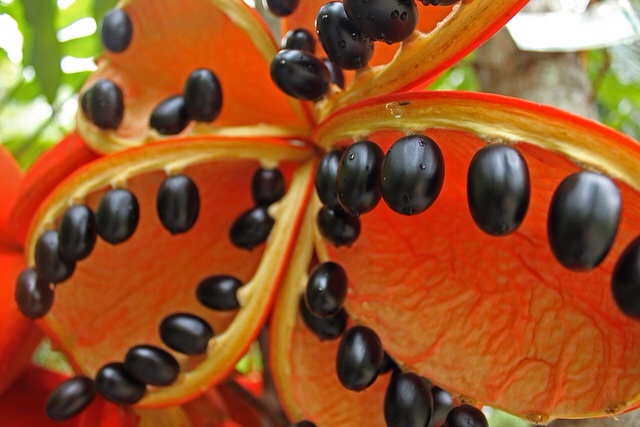Fruits are delicious and full of nutritional value. No matter who you are and where you are in the world, there will always be a fruit that you love to eat. One of the best things about fruits is that there is a lot of variety in size, shape and most importantly the taste. Now there are some fruits that are eaten very commonly all over the world. Examples of these fruits are apples, bananas, oranges, mangoes and many other fruits. In addition to these fruits there are many other unique yet delicious fruits in the world. We have gathered a list of 50 of the weirdest fruits from all over the world. You might be surprised to see and read about some of these fruits so hold on to your taste buds and let’s take a look at 50 of the most weird and unique fruits from all over the world.
Buddha’s Hand (Citrus Medica)
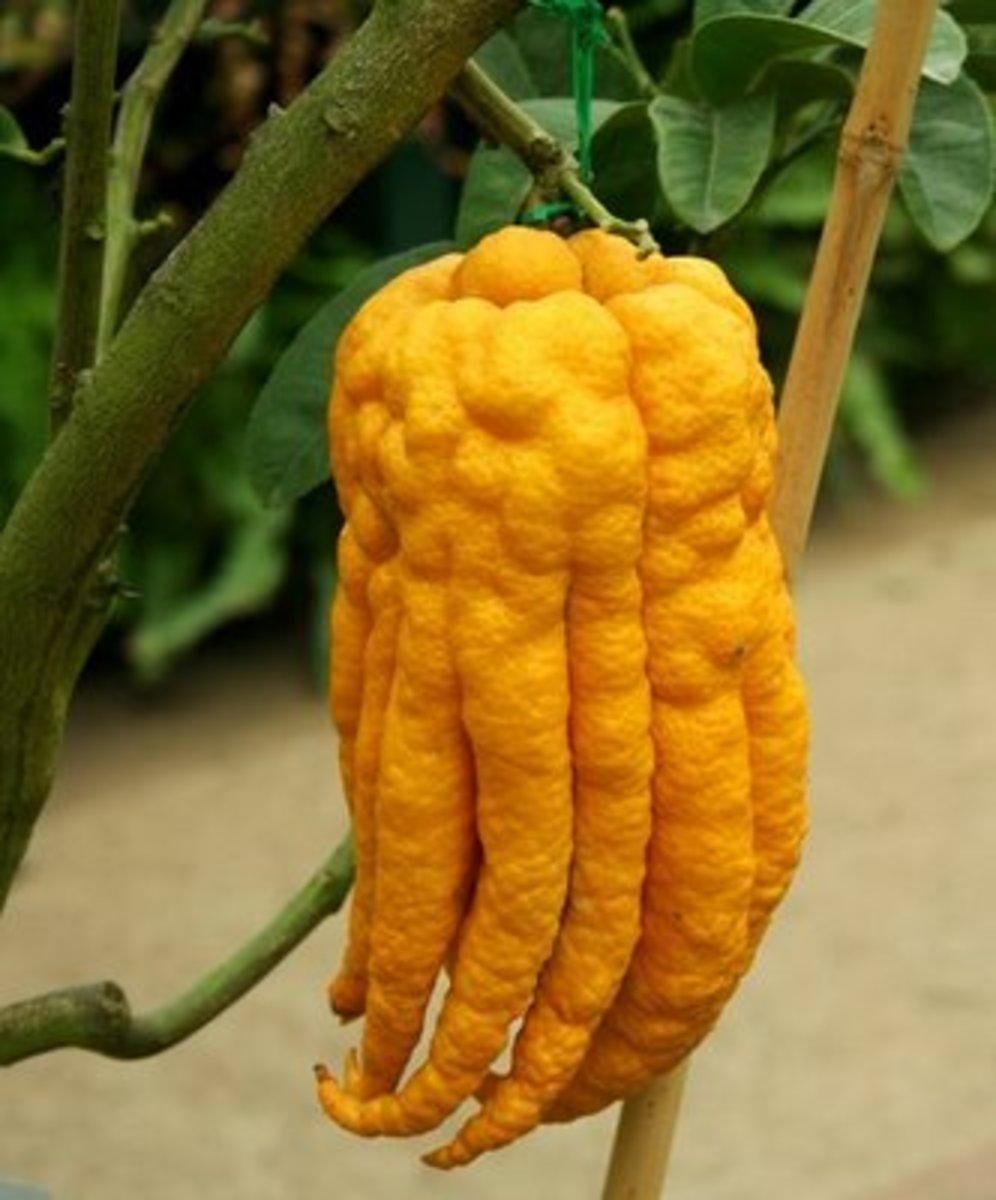
If you’re wondering why this fruit has a unique name, that’s because it is actually shaped like a hand. The protrusions from the bottom of the fruit have a close resemblance to fingers. The most common use of Buddha’s Hand is in religious offerings, especially since the fruit and flowers both have a refreshing scent. While Buddha’s Hand is not an enjoyable fruit, some people like adding it into their salads by cutting it into small cubes. If you preserve thin slices of the fruit, it can certainly be eaten as healthy candy.
In Japan, Buddha’s Fingers are known as bushukan, and is commonly used as an air freshener or clothing scent.
Fruit of the Hala Aka Puhala Tree
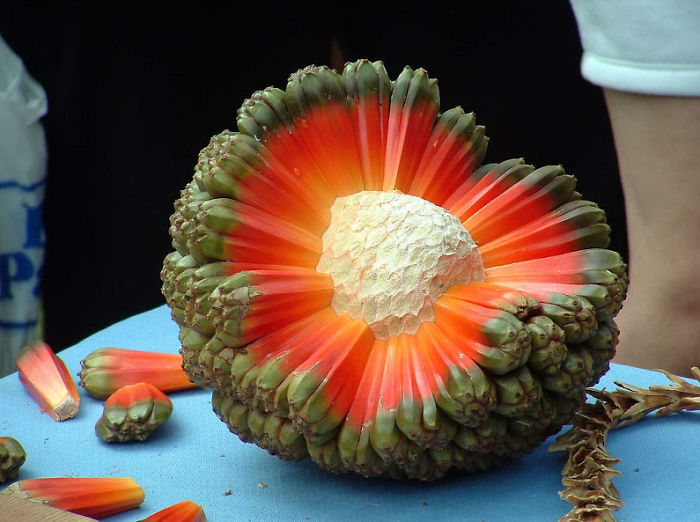
This pineapple-like fruit is found naturally growing in the coastal regions of Malesia, eastern Australia, and the Pacific Islands. The fruit of Hala which is also known as pu Hala in Hawaiian is produced from the female Pandanus tectorius tree. The fruit obtained is large and has an ovoid shape with a diameter of about 4-20 cm. It is usually found in yellow, orange, and red colors having a green-colored top. Pacific islanders, as well as tourists, relish different delicacies made from the fruit of Hala. The insides of each fruit carpel are so pulpy and fibrous that they are extensively used in making dental floss. For centuries the fruit has been used as an aphrodisiac, dye, and medicine by Hawaiian cultures.
Monster Fruit (Monstera Deliciosa)
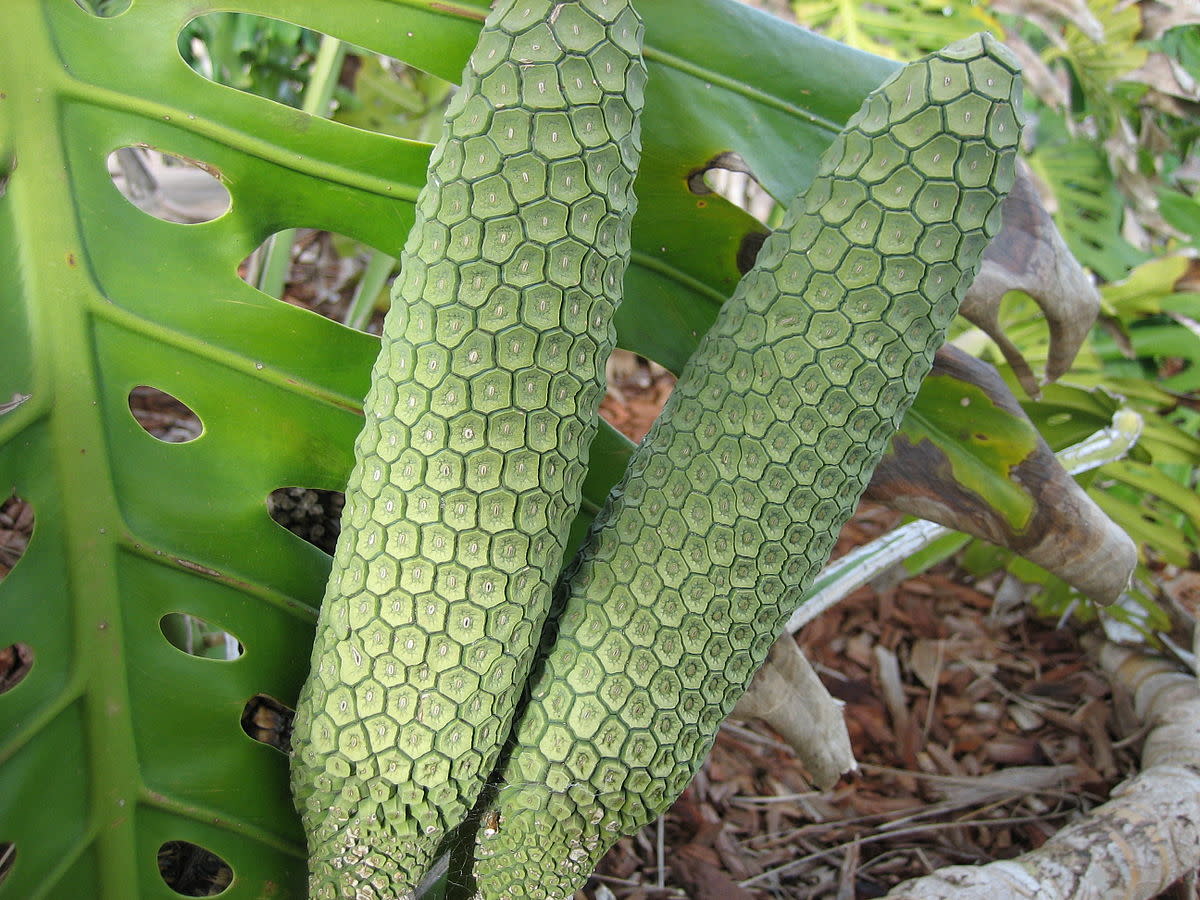
Often known as the Swiss Cheese Plant, this monster fruit has a Mexican origin. The fruit is long in size, similar to an ear of corn. Since the outer layer of the fruit is covered in hexagonal scales, it is necessary to remove them to reach the flesh.
The most unique attribute of the monster fruit is that it has so many different tastes associated with it. Some people even call it the ‘Fruit Salad Plant’, simply because it tastes similar to all other delicious fruits in the world. Strawberry, mango, passion fruit, and banana are some of the tastes that you might detect in this monster fruit.
Jaboticaba Fruit (Plinia Cauliflora)
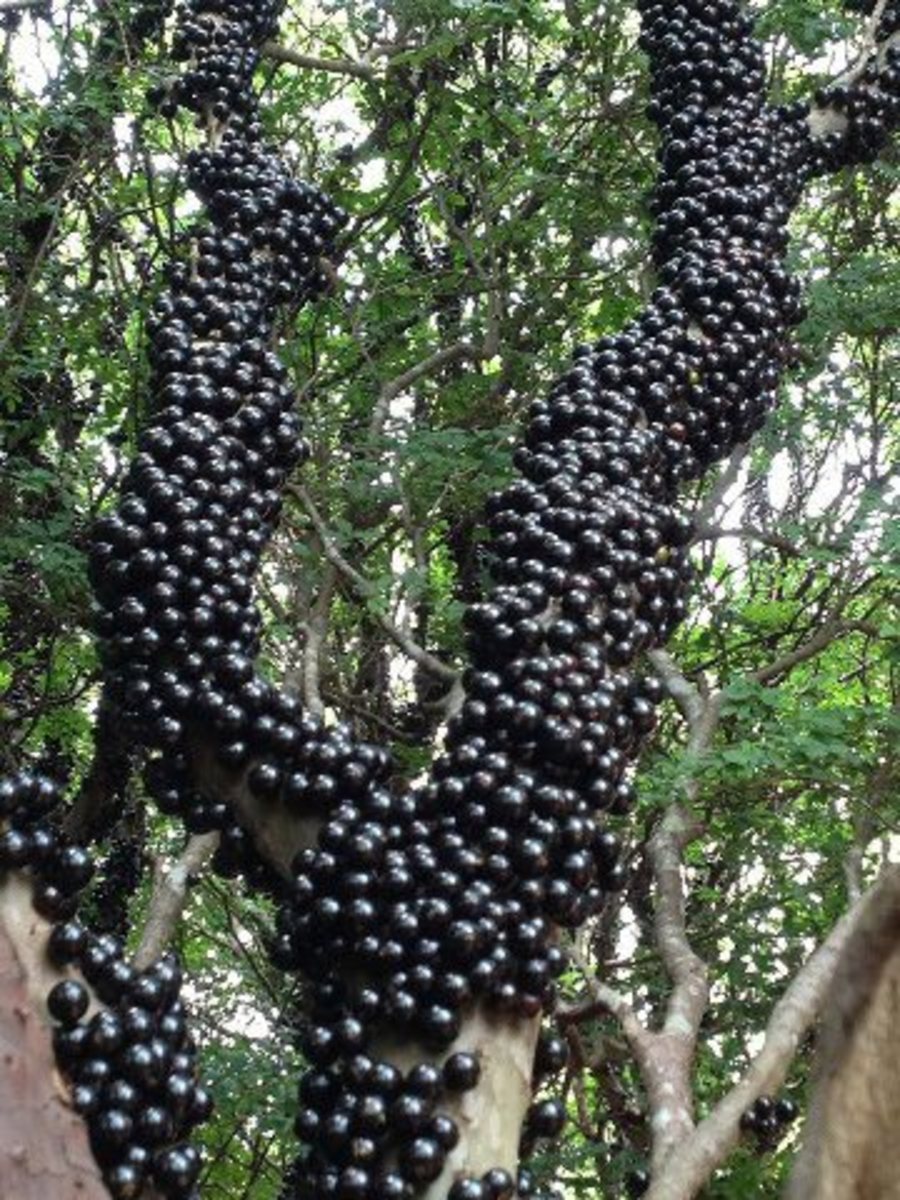
The jaboticaba fruit grows in a way that is just as unique as the name – directly from the tree’s trunk. While most other fruits tend to grow from flowers, the jaboticaba fruit sets itself apart from the crowd. If you ever find a Jaboticaba tree, you will be astonished by the large number of grapes stuck to the branches and trunk. Plus, this Brazilian fruit has purple and black skin with a texture that is similar to grapes. In some regions, the jaboticaba fruit is referred to as Brazilian grapes.
Since the jaboticaba fruit is similar to grapes, it has similar uses as well. While it can be eaten fresh, it is often made into jams, juices, or processed into wine.
Akebi Fruit (Akebia Quinata)
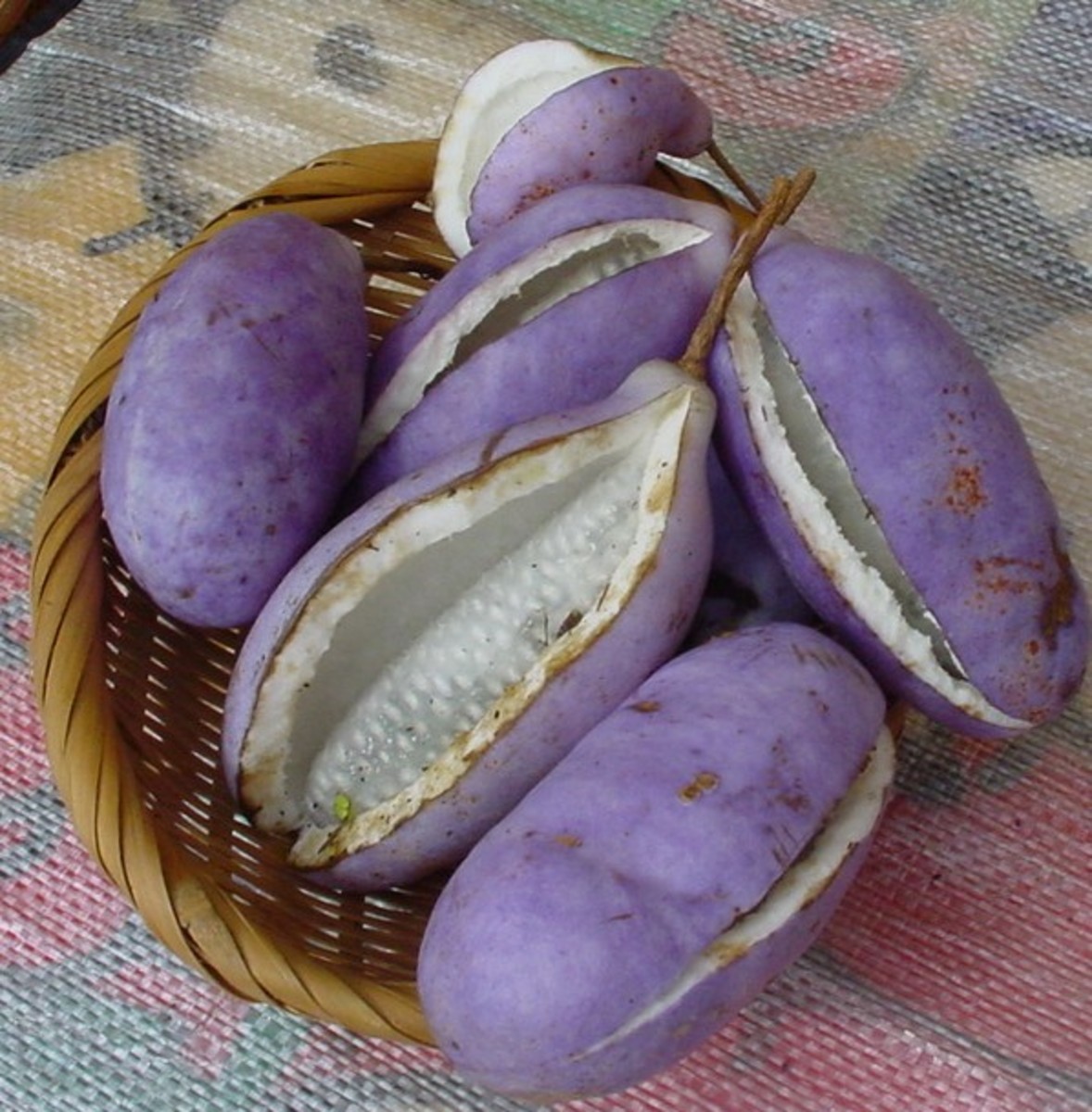
The Akebi fruit has a unique appearance. With a bright purple outer skin, the flesh inside is white and elongated. It also includes lots of tiny black seeds which can be consumed while you enjoy the flesh. While the Akebi fruit is found in Taiwan, China, and Japan, it is given a special status in the region of Japan and the locals enjoy adding it into specialty dishes.
The Akebi fruit has a soft and crunchy texture when eaten, with a mild, sweet, and bitter taste.
Ackee Fruit
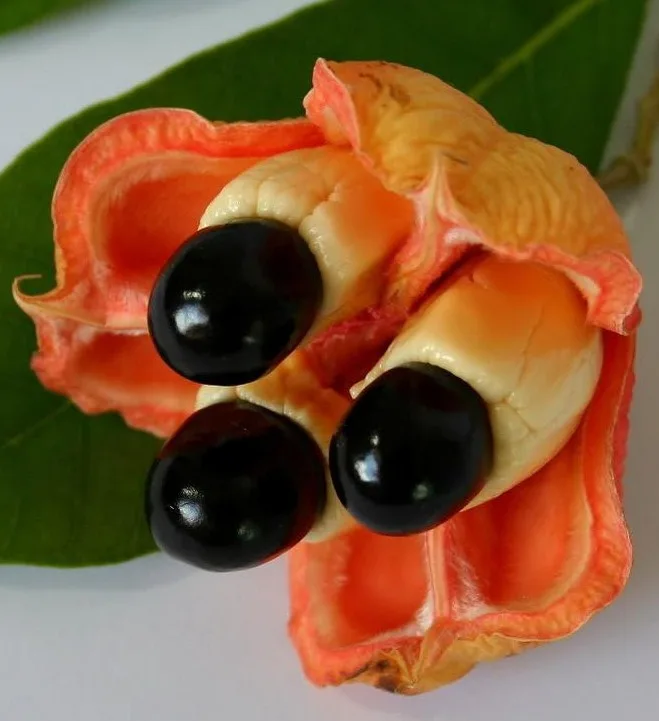
The Ackee fruit seen here above is precisely how you should expect it to look when it is ready to be used. Growing as a native to Jamaica, it is used as a delicacy in most Jamaican dishes. The picture seen above is from when the fruit has ripened. The fruit presents itself with the seed protruding out from the white flesh. That is about the only part of the fruit/vegetable that you can eat. The rest is exceptionally toxic, and yes, Ackee fruit is also used as a vegetable as it is a big part of the food network in Jamaica.
Cashew Fruit
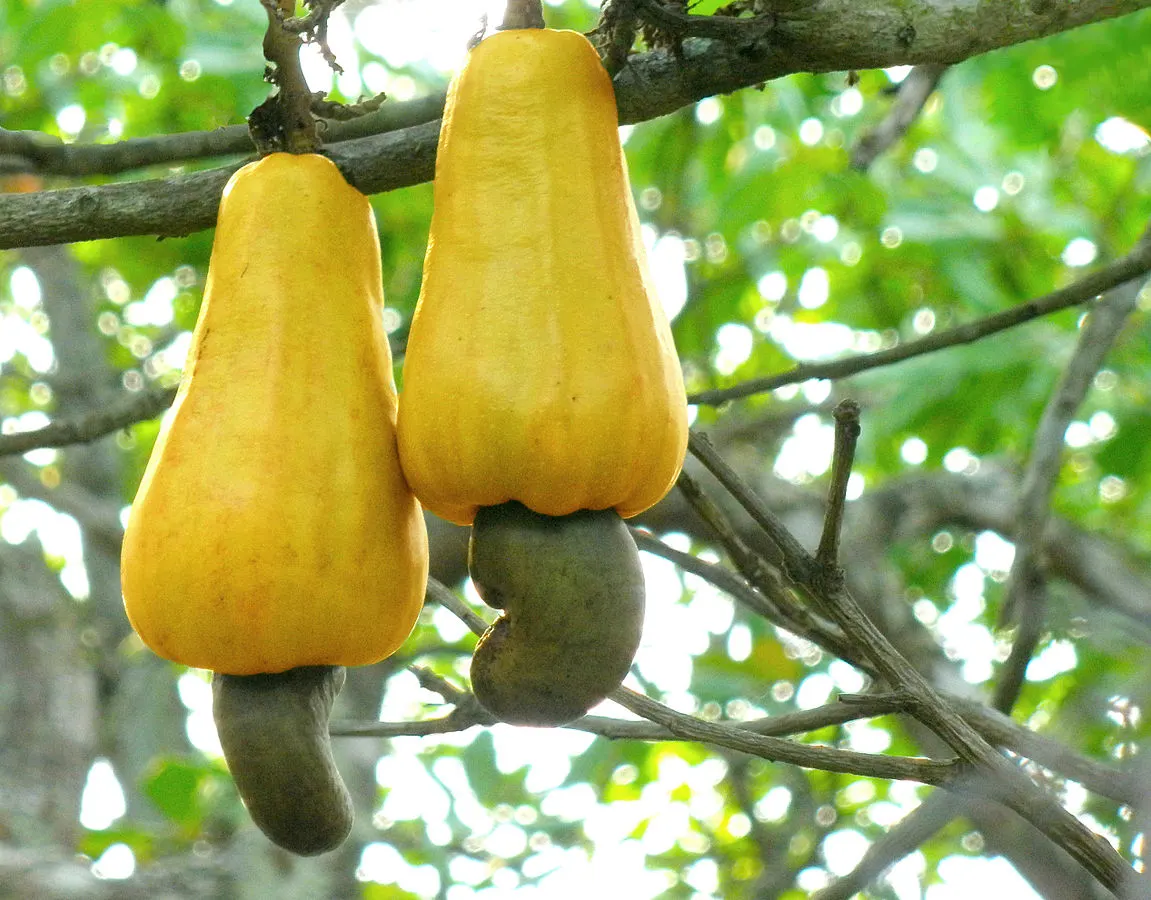
The appearance of this fruit is the most exciting part of the existence of this fruit. What looks like the fruit is a false fruit. If you aren’t an expert, you may miss it and cut the fruit wrong. The exposed part that you see above is the seed of the fruit and not the actual fruit. The fruit is the cashew-shaped green or brown protrusion. That is the primary fruit that needs to be harvested. The commercial value of this fruit is, of course also in the seed, which produces the dry fruit loved by almost everyone: cashew nut.
Rambutan
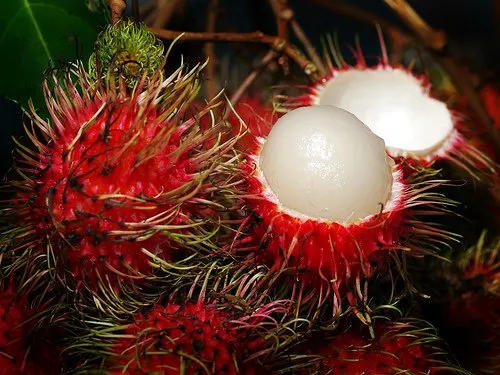
Rambutan is a local name that is most commonly used in Malaysia and other Asian countries. The fruit is two inches in length and is pure white on the inside and read and hairy on the outside. As shown in the picture above, the word Rambutan means hairy in Malay, which is why it is known as the “hairy fruit”. There are two famous varieties of this fruit. Yellow and red. When un-ripened; it is green, and when it ripens, it turns yellow or red. The skin of the fruit is easy to break off and is soft to the touch.
Mangosteen
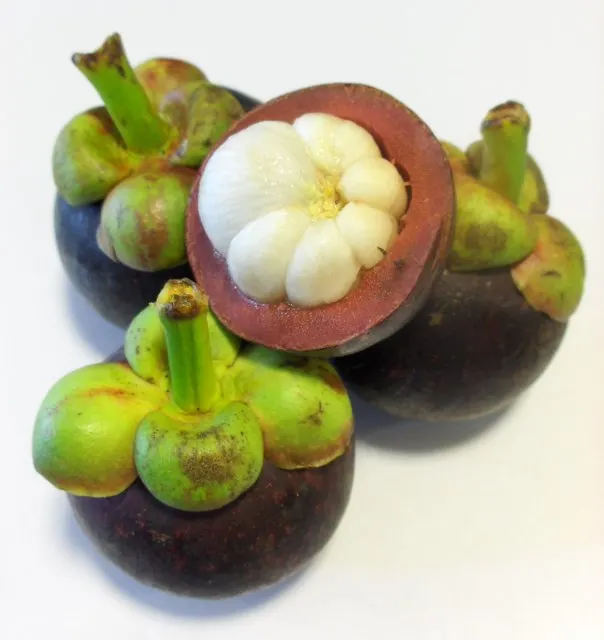
The introduction of the green fruit called Mangosteen is a phenomenon that is unique in all qualities. It is brown below, with a flower and petal-type stem that is green in color. The overall size of the fruit is small, like a tennis ball and the covering of the fruit is deep purple and brown in color. It is thick enough so that it can protect the flesh that is inside and is white in color. The interesting fact about this fruit is that the number of petals on the top indicate how many arils are there in the fruit.
Makrut Lime
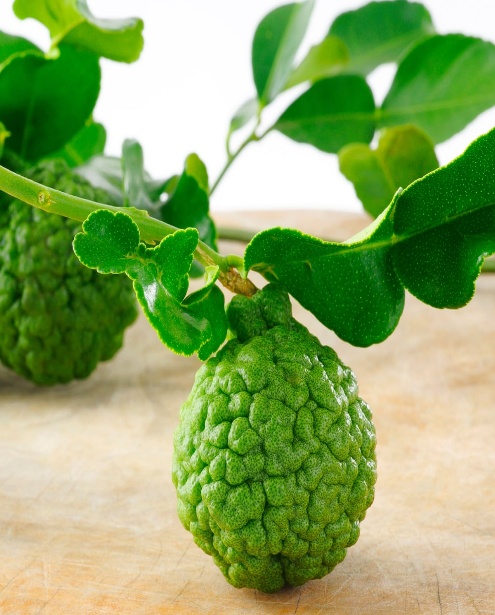
Makrut Lime is not at all like other limes. It is normally called ‘Kaffir Limes’, because of its history. It is a tropical fruit found in Asian Countries. It is the most favorite lime for Thai people, and they call it “Thai Limes’. Unlike other limes, it has bumpy skin and has this intense bitter taste that makes it super unique. Its aroma makes a person feel very fresh. When it comes to similarities with other limes, Makrut Lime also has a green outer appearance, and zest can also be prepared from it. It has a variety of beneficial organic nutrients that makes it useful in food and as herbal medicine.
Melothria scabra
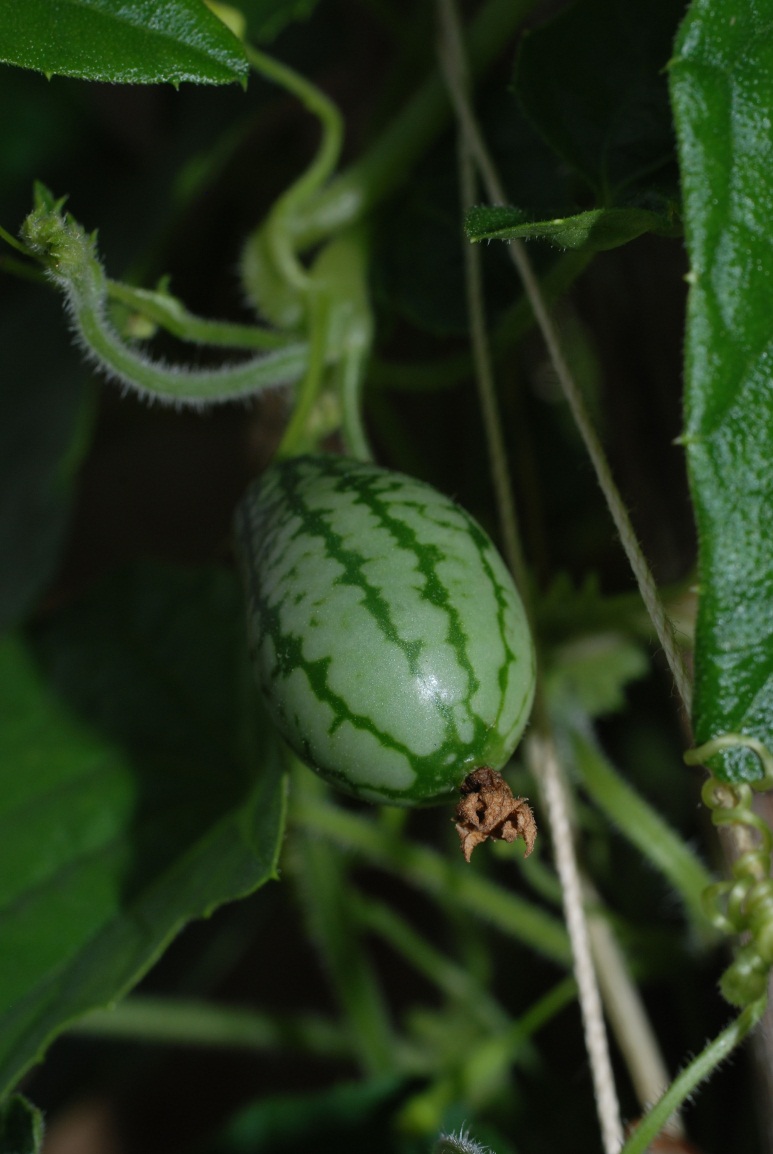
Melothria scabra, also known as Cucamelon, belongs to the family of Cucurbitaceae. It is a very small fruit, just like Aboujahl watermelon, that has that savory flavor, and just like cucumber, it is a bit crunchy. Melothria scabra is rich in antioxidants, fiber, vitamin C, vitamin E, vitamin K, and potassium. They are good for those who are on a journey of losing weight because they are rich in fiber and are calorie deficient. It contains Lycopene with is an anti-inflammatory ingredient. It boosts an individual’s immune system. Just like cucumber, Melothria Scabra is lightweight and can be used in salads.
Miracle Fruit (Synsepalum Dulcificum)
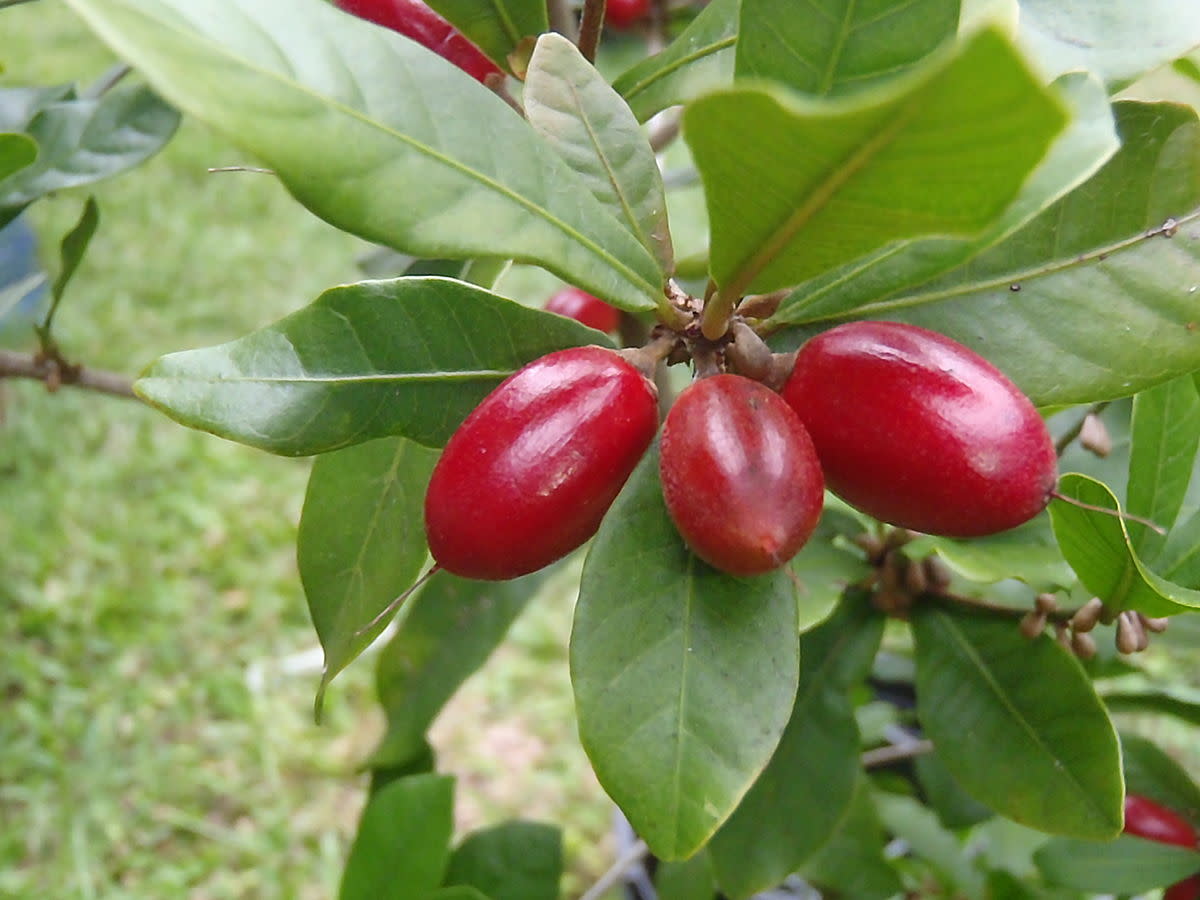
The reason why this fruit is known as a ‘miracle’ is the strange side effect that it brings. After having this fruit, you might notice that even sour foods will suddenly start tasting sweet. This is caused by the miraculin present in the fruit, which tricks our taste buds into believing that sour tastes like sweet.
Apart from being a strange berry, the miracle fruit is also used as herbal medicine to treat diseases like diabetes and to correct medicine-related taste discrepancies. If you are looking for some miracle fruit, it is commonly found in West Africa, Ghana, Taiwan, and Puerto Rico.
Kiwano Melon (Cucumis Metuliferus)

This African horned cucumber fruit is a rather peculiar and exotic fruit. Since it belongs to the family of cucumbers, you can expect the Kiwano melon to taste similarly mild, and sometimes sweet. If you let the fruit get very ripe, then you can taste a very mild banana flavor as well.
The Kiwano melon was amongst the very first melons to be discovered in the world. The yellow and orange skin paired with the unique texture makes this exotic fruit a popular choice for edible decorations on other food items.
Aguaje Fruit (Mauritia Flexuosa)

Grown in the tropical regions of Peruvian Amazonia, the Aguaje fruit has a distinct appearance with its shiny brown scales. When you peel the skin off, you can reveal a yellow flesh with a nut in the middle of the fruit. Many people use the Aguaje fruit for its range of health benefits, including high vitamin-A content, antibiotic, and anti-inflammatory properties.
If you are looking for a fruit that can help you maintain your eye health as well as fresh looking skin, then the Aguaje fruit is all you need. The most common users of this fruit are women, especially since eating this fruit is associated with an enhancement of the female figure.
Noni Fruit (Morinda Citrifolia)
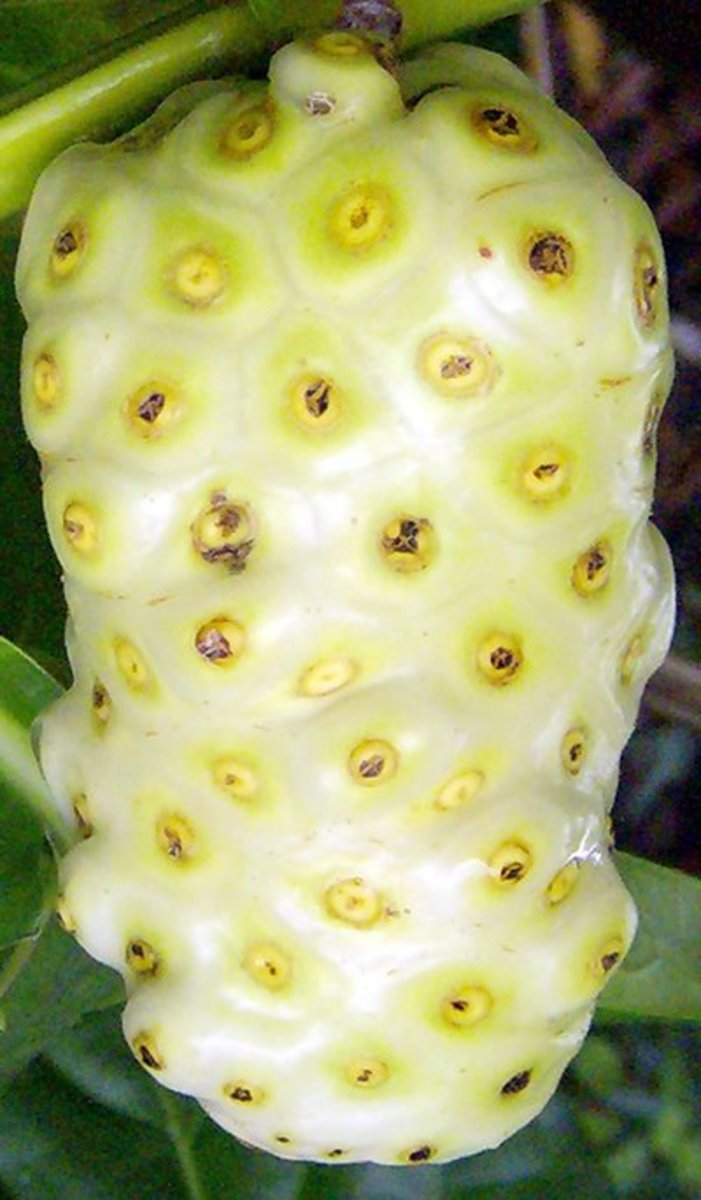
With the noni fruit, you should not judge by appearance. Even though the pimpled skin is strange for most people, the health benefits of this fruit and plant are exceptional. Some modern health experts have termed it as a super fruit due to healing properties such as relieving menstrual cramps, bowel problems, UTIs, and diabetes. While this unique Indian mulberry was once found in Southeast Asian regions, it is now becoming highly commercialized due to the medicinal properties.
However, the noni fruit does come with a foul smell when ripe. It is also sometimes called the “vomit fruit”. To eliminate this smell, it is often cooked with savory spices that override the unpleasant odor.
Breadfruit (Artocarpus Altilis)
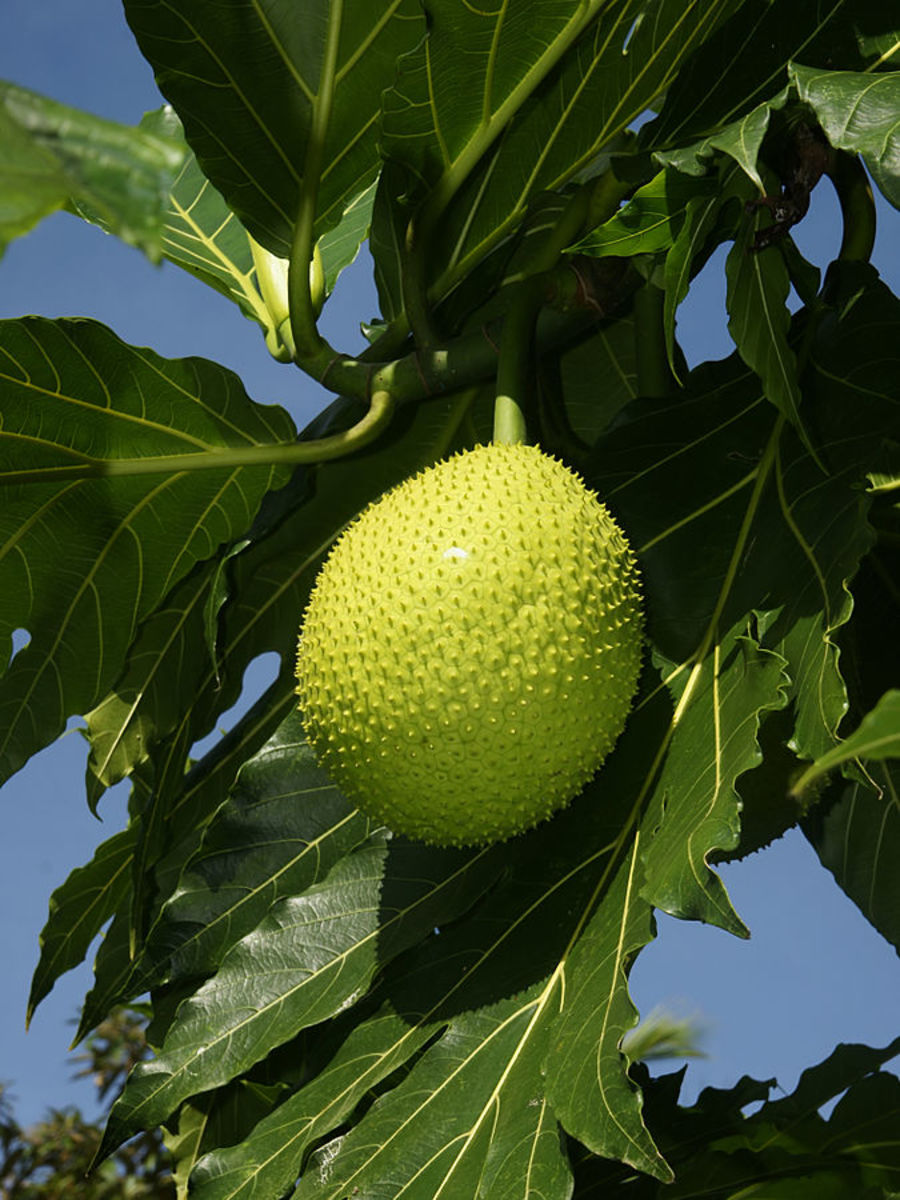
Belonging to the family of mulberry and jackfruit, the breadfruit is often found in the Southeast Asian regions as well as the Pacific Ocean islands. The shape of the breadfruit is similar to a melon – almost the size of a regular soccer ball. The outer skin is bright green in color with a textured surface. When peeled, the inside has a flesh with seeds in the middle.
As the breadfruit ripens, the starch content naturally in the fruit begins to convert into sugar. If you cook the breadfruit, you will notice that it tastes similar to freshly baked bread. We recommend trying it with both savory and sweet foods since the breadfruit can serve as a great neutral component on your plate.
Physalis (Physalis Peruviana)

Also known as the golden strawberry, the Physalis fruit resembles a tiny tomato. The fruit is incredibly small in size, such that when it grows inside the papery husk, the fruit is often concealed as a bougainvillea flower. To find the Physalis fruit, one must remove the husk.
When ripe, Physalis tastes somewhat similar to a pineapple. Due to the sweet-tart flavor, Physalis can be eaten raw, cooked, or made into jellies and jams.
Dragon Fruit
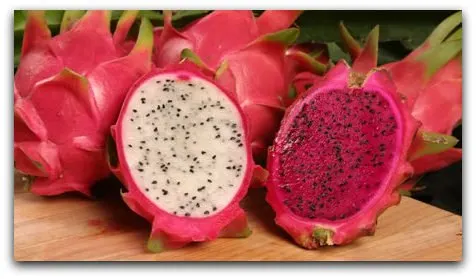
When looking at this fruit, you realize that the name given is apt and perfect. Its fiery red color is beautiful and reminiscent of a dragon’s tail. The inside flavor is sweet to taste and comes in two different colors; red and white. The red and sometimes purple inside is a lot sweeter as compared to the whiter one though the outside of both looks the same. The outer skin is not that difficult to get rid of, and the edible seeds present inside to create a taste as sweet as the fruit itself. Dragon fruit comes from the cactus family.
Custard Apple
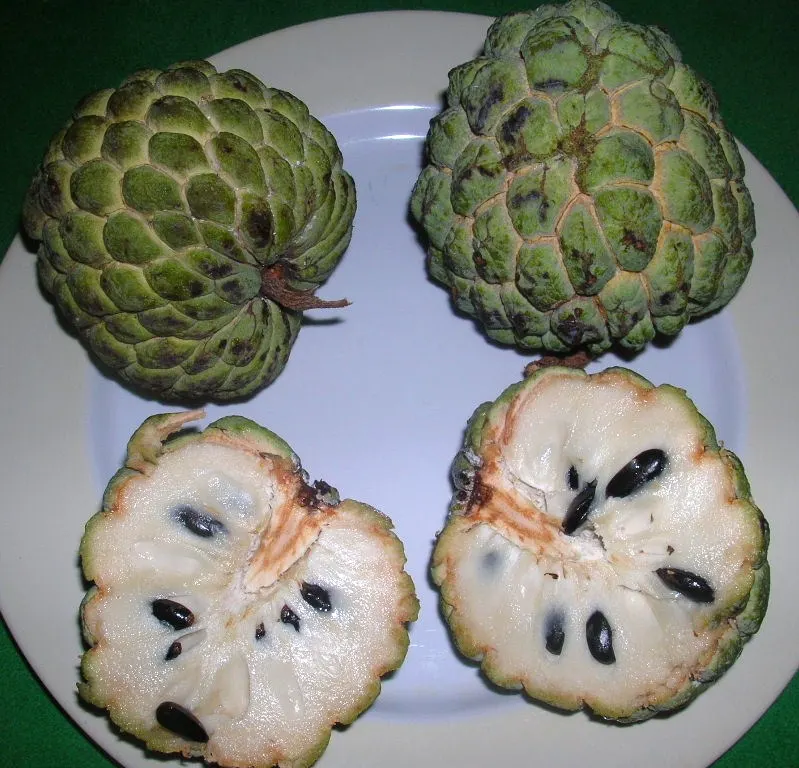
The Custard Apple is somewhat an interesting fruit. The reason why it is called a green apple is because of its outlook. On the outside, it looks like a green apple with blisters that may have formed over time. The fruit itself is soft to touch and easy open. The white fruit inside is the sweetest fruit you may taste. It’s white in color and has black seeds. You can also pluck the blisters out, and the matter will come with the cover. It is native to the Andes and is a unique fruit that is rare and difficult to find.
Cupuacu
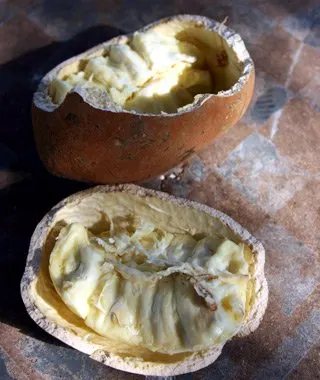
As seen in the picture above, the Cupuacu is a specific fruit found in the Amazon basin and is unique and native to that place. The shape of the fruit is as you can see above, brown in color and oblong in shape. The covering of the fruit is hard to protect the fruit inside. It is overall twenty centimeters in length and can weigh over one or two kilos. The flesh of the fruit inside is soft and white in color. The Cupuacu is a fruit that is great for immunity boosting and great for skin and hair rejuvenation.
Durian
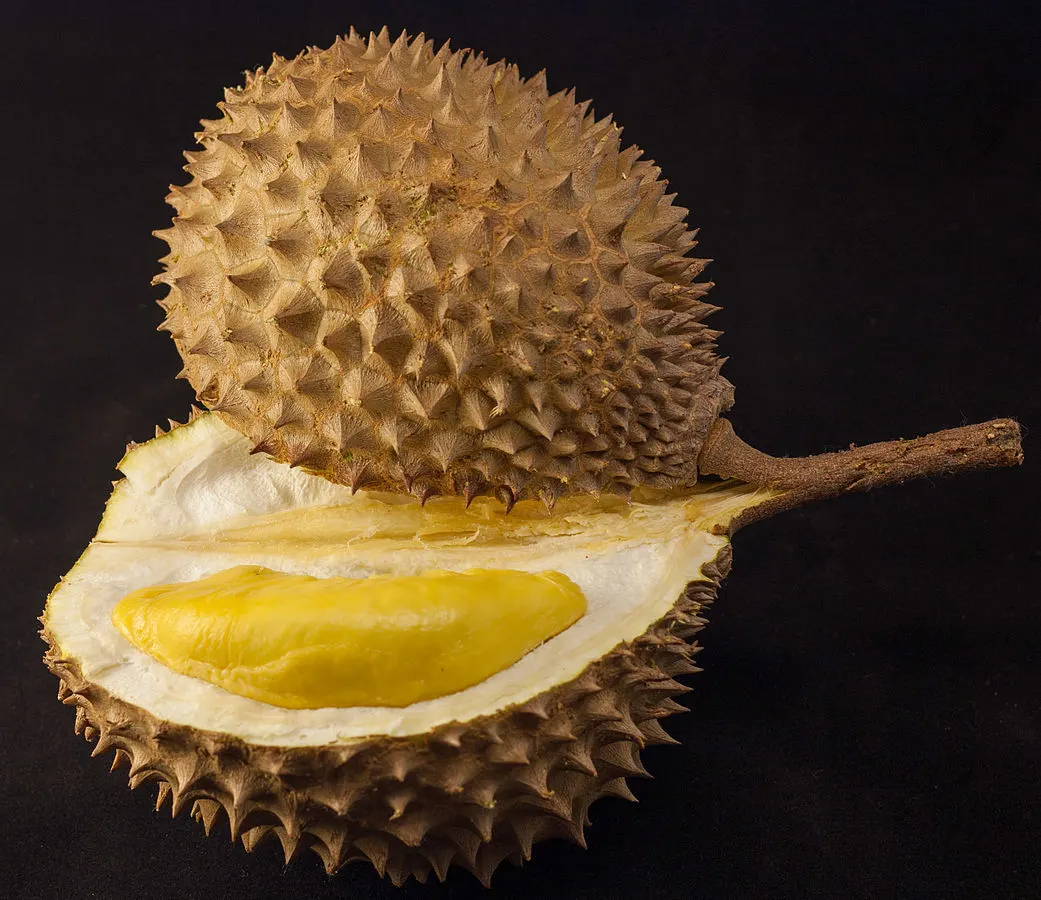
You may have heard about Durian, a fruit that smells so bad that it is banned in many places. The fruit is known to people as the weirdest of all fruits, mainly because of its smell. Durian is majorly found in countries like Malaysia and Singapore. It has spikes on its outer covering that protects the soft fruit inside. The smell of this fruit is what we need to talk about. The smell has caused the Singaporean government to ban this fruit in public spaces. The flesh inside though tastes as sweet as honey nectar, so maybe there is some good in it.
Jack Fruit
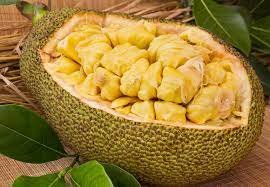
Jack fruit, mostly found in India and Malaysia due to its production decreasing, is now rare. As seen in the picture above, its outside covering is hard as pineapple and has small bristles that protect the fruit inside. On the inside, you will find individual fruits that are light yellow in color and look like dumplings. The best thing about a jack fruit is that it tastes like meat, which is why it is known as vegetable meat. It is used in South Asian and Malaysian cuisines as a replacement for actual meat for vegetarians and vegans. The abundance of fruit within the shell is exceptional.
Korean Melon
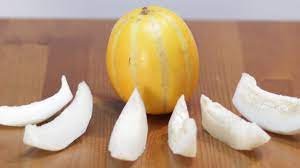
Korean Melon, as seen in the picture above, is gown specifically in Asian countries. It is believed that the melon has travelled from India, Pakistan down the silk road to China and then to Korea. The fruit is sweet to taste, and some say the flavor goes between honeydew to cucumber. The texture of the fruit is easy to slice and open. The thin skin on top of the fruit and the tiny minute seeds are all a culmination of the fact that you can easily eat it wholly. You don’t even need to cut it and take off its skin if you don’t want to.
Passion Fruit
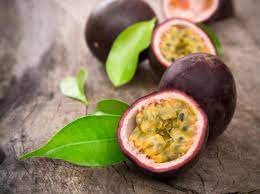
Passion Fruit is a fruit that grows on the flower called the passionflower. Its appearance is easy to spot. The outer shell is tough and robust. Often the color is a dark purple or a shade of dark brown. The inside also has a layer of juicy white matter, and then on the inside of the layer is the actual fruit which is yellow and full of seeds. They are tropical fruit, but due to technology in plantation, they can be found almost anywhere in the world. The fruit itself is highly nutritious with a good source of fiber and vitamins of all kinds.
Feijoa
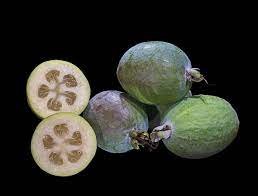
Feijoa is a fruit that generally grows on a tree called the ornamental tree because it’s an evergreen tree. The fruit is a part of the guava family but is not precisely guava. The appearance of the fruit is green on the outside, with the skin tough enough to withstand outside temperature as it is cultivated in dry to mild dry paces. The reason why the tree is called an ornament tree is because it has beautiful leaves that grow into artistic looking plantation. The fruits can be processed into making jam and can be eaten fresh as they taste sweet.
Tamarillo
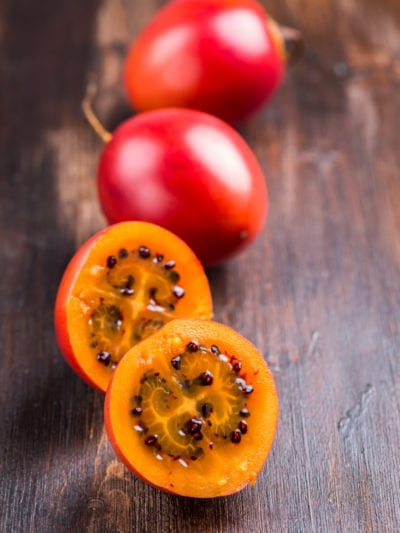
Tamarillo is a fruit that resembles another vegetable that is most often used, called a tomato. Yes, a tomato is what it looks like but do not be fooled by its appearance. The fruit is small, almost duck-sized, and is orange-red in color. Cultivated in most warm places like central to Latin America, it can withstand the highest temperatures. It is often expected that the cover of the fruit is edible, and you can and should eat it. The inside is juicy and has seeds that are edible and cannot do any damage. The Tamarillo fruit can be and is used in chutneys and other food condiments.
Sour Plum

Sour plums are known worldwide and most often traded from Iran to the rest of the world. They are small in size and green in color. They look like tiny apples that are bite-sized with skin that is taunt and fresh. They are sour in nature and taste as they are better as palette cleanser. They help cleanse your taste if you eat it with a pinch of salt. The plums are often used to make chutneys and sometimes just eaten fresh from the plum tree. They can be eaten separately or as a snack as they are small and do not fill up your stomach.
Ice Cream Beans
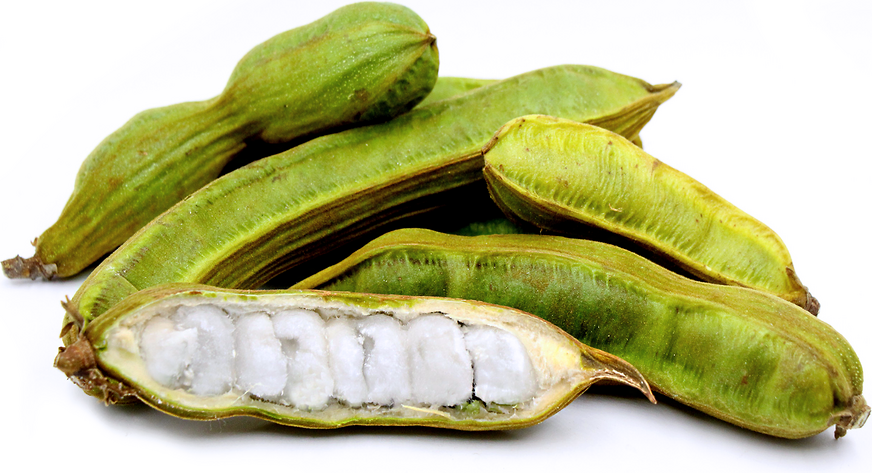
Ice cream beans are one of the most unique fruits to come out of South America. The outside of the fruit may look like peas but they have a very sweet taste. They taste Vanilla. Once you peel the cover the inside of the fruit is white and has a cotton candy texture. Once you try them you would definitely want to try them again.
Longan

Dimocarpus longan commonly known as longan is a tropical tree belonging to the family Sapindaceae. The plant is indigenous to Asia and nearby regions. The tree produces an edible fruit that comprises a brown leathery exterior surrounding a white jelly-like translucent pulp. A single dark-colored seed is also present within the semi-transparent edible pulp. The fruit of longan has a spherical appearance and is always procured in the form of a huge bunch.
It has a close resemblance with lychee and is available either in dried, crude form or as a canned syrup. However, its taste is so many alike dates thus widely used in sweet and sour foods. Moreover, longan has numerous applications in traditional eastern folk medicine.
Mulberries

Morus Alba is a rapidly-growing mulberry tree having a limited life expectancy similar to humans. The plant is native to China but is also naturalized in countries like America, Australia Turkey, Iran, and India. It is a medium-sized plant that produces edible berries that are mostly black, white, or red. The tree is commonly known as silkworm mulberry as it is widely employed in the commercial production of silk.
Mulberries are used as an ornamental plant because of their vibrant and aesthetically pleasing appearance. Their sweet taste makes them an ideal choice for manufacturing wine, tea, jam, juice, and processed foods. It is an effective traditional Chinese medicine that helps reduce high levels of cholesterol and stress due to the presence of bioactive constituents.
Jujube

Typically known as a red date or Chinese date is a small-sized reddish-brown colored fruit that has a wrinkled outer surface. This seed-containing fruit is found growing on flowering plants or shrubs of Ziziphus jujuba that is native to Southern Asia. The fruit has a close resemblance with green apples when immature but as it ripens it looks more like a date. Red dates are extensively used in making candies and various desserts because of their sweet taste and gummy texture. In conventional medicinal practices, jujube fruit is commonly used to improve the sleep cycle and cognitive functions of the brain.
Salak
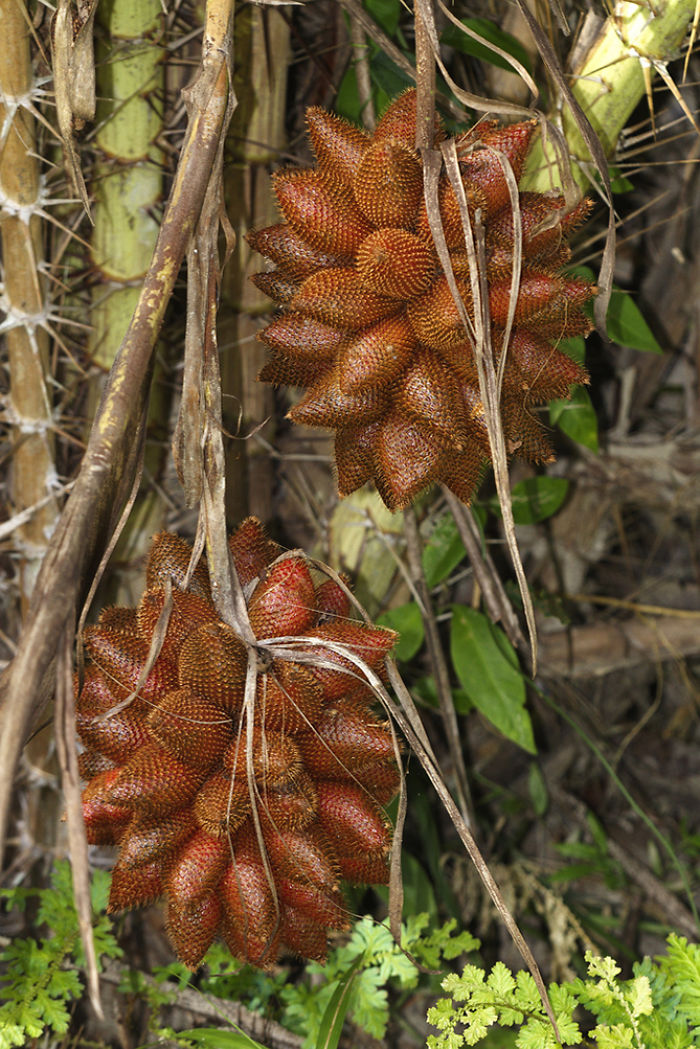
Scientifically known as Salacca Malacca belongs to the palm tree family. The fruit is naturally cultivated in the Java and Sumatra regions of Indonesia. It is commonly known as snake fruit because of its reddish-brown scaly exterior. It grows in the form of clusters at the base of the palm. The white colored pulp of the fruit is the part that is generally consumed by humans. The interior is divided into three lobes just like the cloves of garlic that are revealed upon peeling the scaly skin. There are numerous health benefits of this fruit for instance it helps to maintain stamina, improves brain activity, and so on.
Carambola
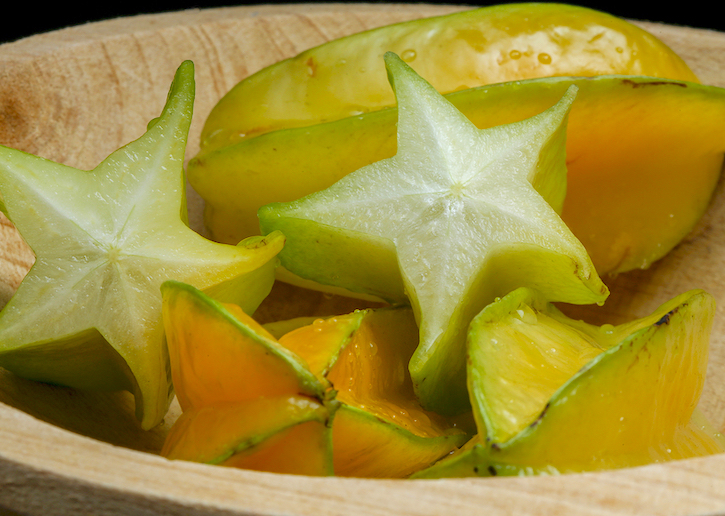
Some of you might have tasted the sweet and sour star fruit called the carambola. Despite the sour taste of carambola, did you know that this fruit is the best fit for your health? It is a highly nutritious fruit boosting the antioxidant levels whenever you consume it. You must be surprised to know that Carambola is just a scientific name. The fruit is star-shaped and that is why it is highly known as the star fruit. It is usually a greenish-yellow fruit that is crispy from the outside, the skin, and the sourness of the fruit is tartier. The fruit is not only healthy for your body but is also highly beneficial for enhancing your beauty.
Make sure you enjoy the tarty start fruit and don’t miss on experiencing the benefits!
Purple Sweet Potato
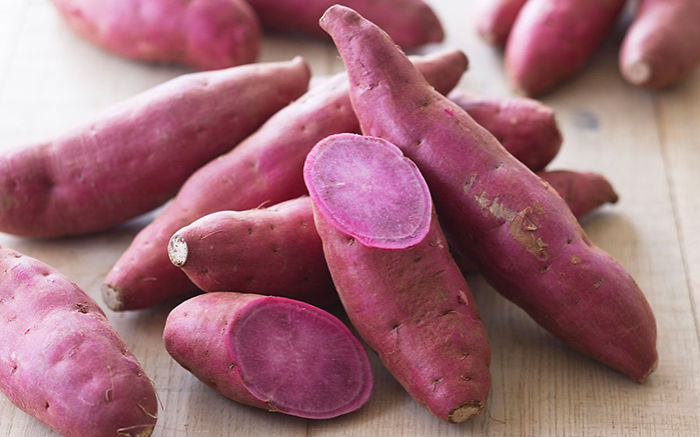
There’s always a long debate about whether sweet potatoes are fruits or vegetables. We’ll, one should believe in what a darling vegetable sweet potatoes are!
They are not only delicious to eat with every meal as a side but they also have incredible nutrition to provide to your body. It helps boosts beta-carotene to ensure that your body is prevented from any type of heart disease. Moreover, it also boosts your immunity and ensures regular blood circulation.
Not only this, but the gorgeous purple sweet potatoes are high in Anthocyanin that helps to keep up with brain health. Thus, it greatly helps patients suffering from dementia.
Black Sapote
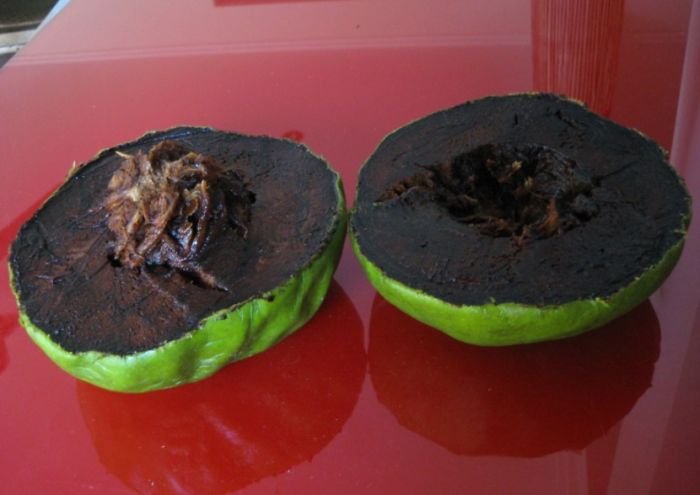
Black Sapote is commonly known as chocolate pudding fruit, black soap apple, or zapote Prieto in Spanish. The tropical fruit-producing tree is found native to Mexico, Central America, and Colombia. The size, shape, and some physical attributes of black Sapote are similar to a tomato. Its olive-colored skin turns yellowish-green upon ripening. Similarly, the distasteful white colored pulp develops a distinct flavor similar to chocolate pudding when the fruit matures. Black Sapote is extremely unfit for consumption in its immature form. Due to its chocolate-like flavor, it is extensively used in making cakes, ice-creams, mousse, and other confectionary items.
Litchi 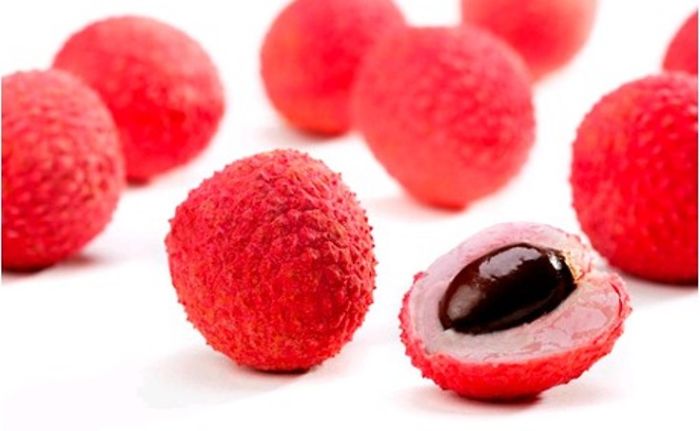
Did you know that Litchi is known as the Chinese fruit? Though it is grown in China it is also found in countries that have a warm climate like the USA, Hawaii, or Florida. The coolest name given to its shell or skin is an alligator strawberry. Well, that’s obviously because of the red strawberry-like textured skin it has.
The most amazing thing about litchi is that the fruit also smells great! It has a floral scent with a delicious fruity taste. You can have litchi in a smoothie, in salads, or can also enjoy the fruit on its own! There is no doubt on the fact that peeling litchi is one task. But honestly, the efforts of peeling the fruit are worth it!
Achiote
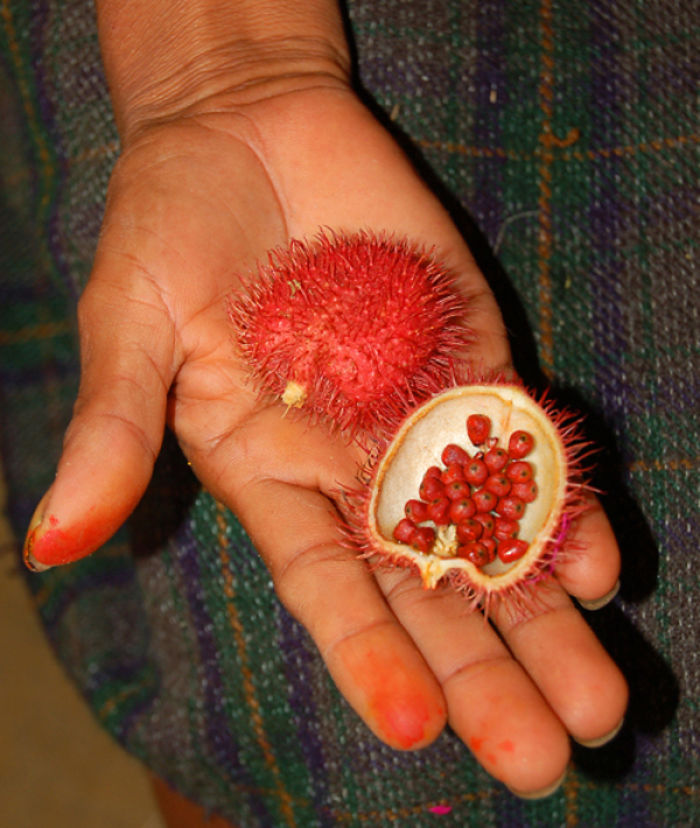
Achiote also referred to as annatto is an orangish-red condiment procured from the seeds of Bixa Orellana. The achiote tree is widely grown in tropical regions extending from Mexico to Brazil. It is used in culinary practices as a food color because of its ability to impart orange or red colors to foodstuff. It has a slightly peppery taste with a spark of nutmeg making its flavor sweet, nutty, and peppery. Annatto is being used as a coloring agent for the large-scale production of diary-based pre-packaged food items. Moreover, it a safe and organic substituent for synthetic food coloring agents to avoid food-related allergies.
Langsat Fruit
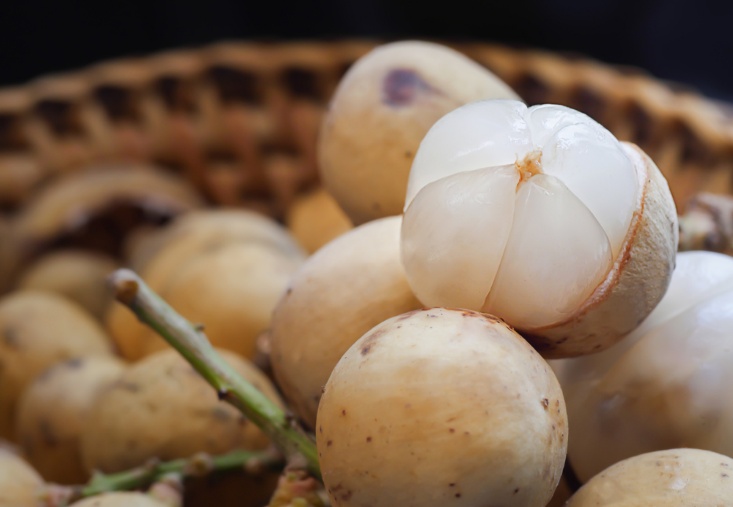
Langsat fruit, commonly known as Lanzones in English, Dokong in Malaysia, and Duku in Indonesia, belongs to the family of Mahogany trees. It is scientifically recognized as Lansium Parasitiucum. This sugary, mouthwatering oval-shaped fruit originated in Southeast Asia, including; Malaysia, Thailand, Brunei, and the Philippines. It contains soft bitter seeds that make the Langsat taste sour. This seasonal fruit grows like a bunch of grapes and is harvested in late autumn and early winters until they have a yellow-brownish colored outer appearance. It is similar to longan and lychee, as it has translucent-gel like flesh, and it is slightly acidic. It is a good source of all necessary nutrients, including fiber, vitamin A and antioxidants, carrying only 57 calories per 100g.
Hawaiian Papayas

Hawaiian Papayas are originally native to the southeast side of Central America. And by the time after it was introduced to other countries around the globe, Hawaii became the finest exporter, exporting 90% of Hawaiian Papayas. This small fruit, having the shape of a pear, has bright greenish-yellow skin. Its fragrant, flavored flesh is in golden-yellow color, having a blended taste of peaches and mangoes. This fruit also has a bunch of black seeds, which are edible, making the fruit have a spicy flavor. Hawaiian Papayas are accessible throughout the year. It is rich in vitamin-A and antioxidants. It also helps in digestion.
Sapota

Sapota, commonly called Sapodilla and known as Chikoo in several Asian countries, have been originally grown in southern regions of Mexico and Central America. This brown oval-shaped soft fruit is available two times a year. It is harvested in the middle of winters and at the end of spring. Its yellowish-brown colored flesh is sweet, composing 2-3 large inedible black seeds. Sapotas can normally be stored for up to a maximum three days; it is the fruits that easily get rotten. It is a good source for fibers acting as a laxative, and it is rich in Vitamin C and A. Furthermore, it boosts your immunity.
Kumquats

Kumquats are one of the oldest fruits since ancient times, native to Southeast Asia. These oval-shaped small-sized fruits in orange color belong to the Rutaceae family. The fruit’s skin is thick enough to tightly cling with the flesh through a tasteless pith. The fruit has 4-6 segments, enclosing small seeds in it. The whole fruit is edible and has a sweet peel and a little bit sour tasted flesh, balancing the whole fruit’s taste. It is an all-rounder fruit. It is widely used as an herbal ingredient for many remedies because it has beneficial nutrients, including Iron, Calcium, Zinc, Vitamin A, E, C, and many other essential oils.
Watermelon Raddish

Watermelon Raddish are native to China, where it is commonly recognized at Shinrimei Radish. This smooth, round, white in color fruit is made up of edible roots. Internally it has the most beautiful magenta-colored flesh, which is a little bit savory and crispy in taste. The size of it depends on when the fruit is harvested, whether in late autumn or spring. The whole fruit is rich in Vitamin C when consumed in raw form. It is composed of a chemical compound known as Isothiocyanate, which makes it organic. This watermelon can be served in a cooked form as well. Chinese people cook it with their seafood to add sweetness to it.
Ugli Fruit

Ugli Fruits are large in size, having a diameter of approximately 13 cm. These citrus fruits were originally found on a random tree in Jamaica in the early twentieth century. They have a non-uniform shape, and the thick, easily removable peel is a little bumpy and has lesions on it. As the fruits mature, it has multicolored tones of green, yellow and orange. The inner fruit is divided into 10-12 parts, each separated by membranes. The yellowish-orange-colored flesh has a scent of lemon and a sweet mixed taste of oranges and grapes. It boosts your immune system and causes a reduction in inflammation, as it is rich in antioxidants and vitamin C.
Purple Carrots
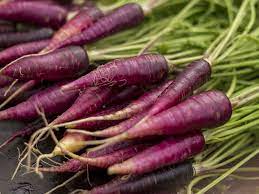
The eye catching magenta colored carrots originated in the region of Afghanistan, Turkey and several Middle East countries. They range in beautiful tones from dark violet color to purplish-red color. They are peppery in taste. Purple carrots are usually white and mag in color. They have wide variety of nutrients that provides important health benefits. All types of carrots are highly rich in antioxidants, fiber, manganese, potassium, vitamin C and have high beta carotene that protects you from inflammations and infections. They are also low in calories. It also has Anthocyanins, which are compounds that prevents clotting in hearts, hence saving a person from cardiovascular disease.
Kepel Fruit

Kepel Fruits were discovered in Southeast Asia, belonging to the family of Annonaceae. They vary in size, from small to medium. Their outer surface has a rough leather-like texture, changing its color from green –brown as it grows older. The flesh’s consistency is a little bit creamy and smooth. The best part is that it is durable for six months. If the brown surface is easily being scratched, it means the fruit is ripe. Kepel fruits have a very sweet smell, just like mangoes and papayas. Just like other fruits, it is rich in vitamin C and Vitamin A. In Asian countries, Kepel fruits are used as anti-aging ingredients to clean the kidneys.
Jicama
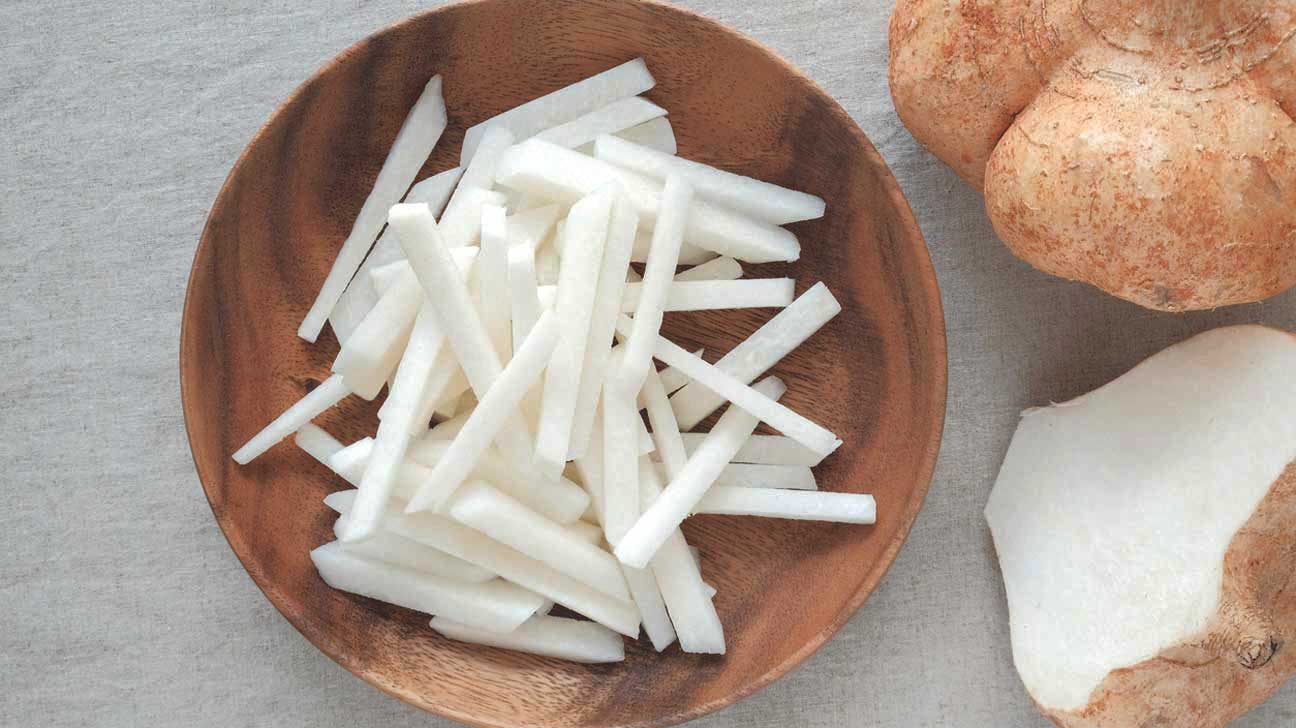
Jicama is widely known as Yambean in Mexico and South America because it originated over there. It is an oval-shaped vegetable, just like legumes. It varies in size. Just like potatoes, it has a rough brown colored textured skin, and it tastes like chestnut. Jicama is available throughout the year. The outer skin is easily cut by the knife as it is thick, it is difficult to peel it. Jicama is more beneficial when eaten in raw form. You can easily store it in the refrigerator as it does not get ripe normally.
Gac Fruits

These melon-sized fruits are found in several regions of Southeast Asia. It is native to Vietnam. This fruit is initially in green colors, and as it ripes it changes in to orange color. These round-shaped Gac fruits have a diameter of a maximum of 13cm. The skin has spines on it, and the interior is totally opposite, a soft spongy orange-colored flesh. The inner cavity is composed of edible sacs in magenta color. What beautiful fruit is it? They don’t taste very sweet and are available in autumn. It is rich in Lycopene and beta-carotene, which are also found in tomatoes and potatoes, respectively.
Aboujahl watermelon

Aboujahl watermelon belongs to the family of Cucurbitaceae, a flowering plant species. It was originally found in Africa. It is a small watermelon, which is a modified form of a berry. It has all the characteristics and features of a watermelon. It exactly tastes like a watermelon. The hard crust on the outside and a smooth sweetest red flesh inside. The only difference is its small. They are a miniature form of watermelons. And we all know how tasty and fresh watermelon is, still this Aboujahl watermelon is the most unfamiliar thing you’ll ever have. It consists of water and fiber, making it suitable for people who are on a diet.
Red Bananas
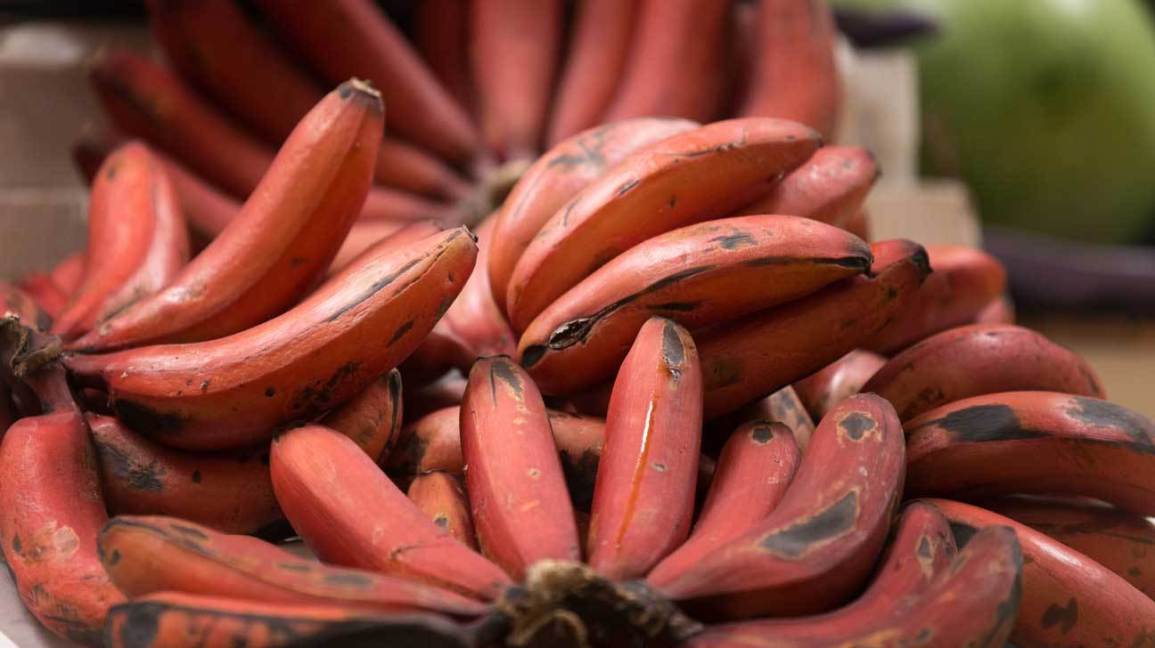
Red bananas are healthier than yellow bananas. It was originally found in Asian countries. Like the yellow one, it is available throughout the year. It usually tastes a bit dry, so you should wait until it is completely ripped. After ripening, it will have a deep bricked, colored thick peel and need colored soft flesh. It tastes like raspberry. It has more beta carotene and vitamin C when compared with the yellow ones. It also contains all three kinds of sugars. Like other bananas, red bananas can make shakes, sweet desserts, and baked items.
Prickly Pear

Where most of the cactus fruits in the world aren’t edible, this one is a little different. These are pears with a prickly touch. Luckily in the market, they are sold without the horns on it. The thorns are removed and then the fruit is sold. However if you find one in the wild then it can be very difficult to eat them with the thorns on the fruit. The fruit is quite delicious and nutritious on its own however most people still prefer to drink its juice.

